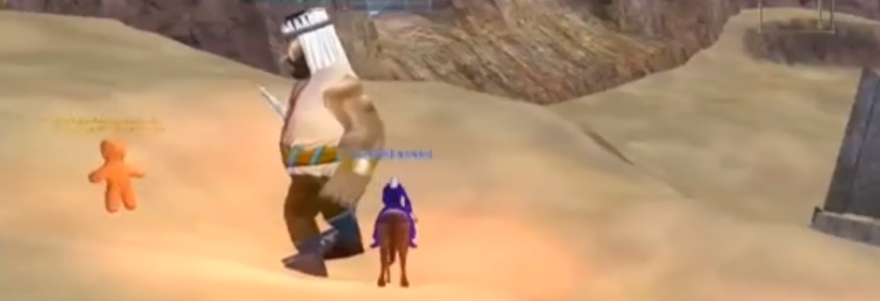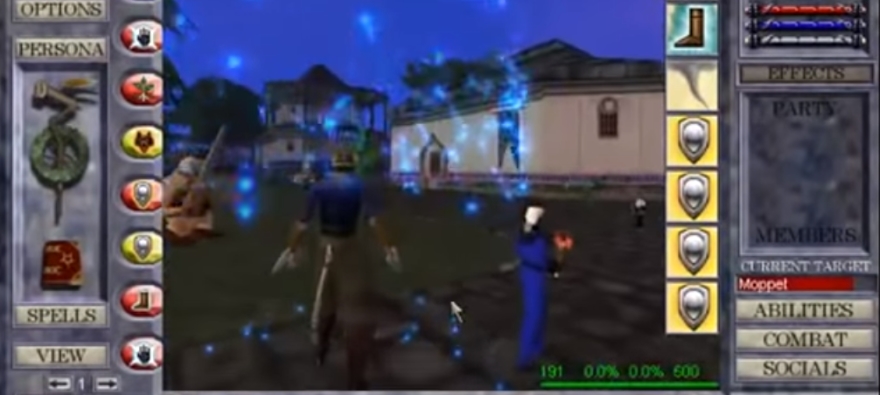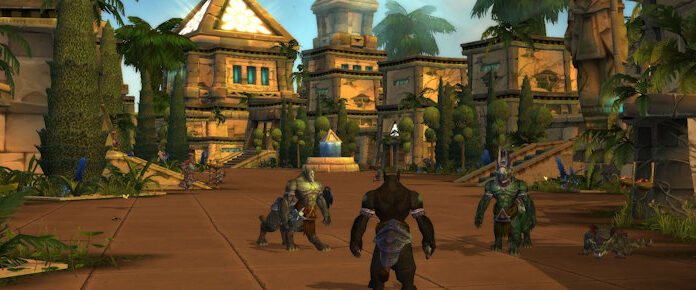
In 2003, Sony Online Entertainment tried an experiment to reach out to the (then) small-but-growing community of Mac users. The company released EverQuest Macintosh Edition — quickly abbreviated to EQMac — which incorporated the core game and the first four expansions of EverQuest: The Ruins of Kunark, The Scars of Velious, The Shadows of Luclin, and The Planes of Power. Because EQMac was a separate version of the game, SOE segregated Apple players on their own server called Al’Kabor and then, for all intents and purposes, left them alone while the “real” EverQuest continued to expand and advance.
While the population didn’t exactly explode as the progression of time rendered EQMac stuck in a type of video game amber, a singular community of dedicated, helpful players formed. This community soon became proud of their hardcore home. According to many of them, EQMac was the way EverQuest was always meant to be played, frozen in time at the release of one of the game’s best expansions. It was a mark of pride to say that you played on Al’Kabor.
For over 10 years, EQMac quietly and doggedly continued, thanks to this small group of loyal players, SOE President John Smedley’s affection for the title, and one or two devoted devs who helped to maintain the MMO. This is the story of a spin-off game that became a living time capsule.

The accidental time machine
“EQMac is a time machine that takes people back to the EverQuest we all knew and loved at the turn of the century. If you let that die, it will be lost forever.” (EQMac player Jasos)
EQMac represented the company’s efforts to dip a toe into the Apple market and see whether there was a sizable population that would flock to EQ as PC players had. SOE used an outside company (which no longer exists) to do the port and ended up with a what it saw as a lackluster product as a result. To make matters worse, when the game launched in 2003, it was to a timid and tepid crowd at best. There weren’t a lot of serious Apple gamers in the early 2000s nor much game development on the platform, and as a result, the market simply wasn’t there.
With an underwhelming population, SOE saw no reason to continue work on the version. The codebase stagnated, and EQMac froze in time, representing the game that was versus the game that it became. Even so, there were those who grew to love and appreciate this old school edition of EverQuest, and a very tight-knit community developed as a result. The only problem is that they were doing so on a ticking time bomb of irrelevance.
After the first few years, the allure of EQMac became less about its native OSX platform and more about its “stuck in time” status. Like all MMOs, EverQuest continued to grow and change as the years rolled on, and some gamers regretted the transition to what they saw as a kinder, “softer” EQ that lacked the difficulty curve and raid challenge of the early 2000s. Fortunately for those who felt that way, EQMac gave them an opportunity to return to the past and play the game as it was — not as it became.
For a player weaned on World of Warcraft, Lord of the Rings Online, or even EverQuest II, 2002’s Planes of Power might well be a completely different generation of gameplay instead of a game from just a few years back. In that era, EverQuest’s leveling took extremely long, with no guarantee that you’d ever reach the level cap. The UI was more cumbersome, the game put you in first-person perspective, the compass didn’t work unless you leveled up Sense Heading, there were no maps, the night was pitch-black for most races — and grouping was an absolute must.
This, ladies and gentlemen, was the environment that a segment of MMO players craved. Instead of holding your hand, EQMac pushed you down in the mud over and over again. Players had to band together to figure out even the simplest of things, and real progression took time, dedication, and a monumental level of teamwork. For hardcore raiders and groupers, it was paradise.

Surprising allies
“You can still learn something about this server and community that has happily survived for so long with so little attention given it. We will fight for the things that are important to us.” (EQMac player Zetrognome)
It’s not exactly true that SOE outright abandoned Al’Kabor after this failed release. While the community was incredibly small (we’re talking hundreds, not thousands) and the studio stated that it wasn’t proud of this version of the client (and thus did not elect to keep the game in sync with EverQuest classic), it did receive a modicrum of support from within the company.
One developer in particular, Todd “Hobart” Schmidt, became the expert on EQMac and began to hack away at the bugs and problems that plagued the server since the game’s inception. Severe issues, such as the in-game sound causing bugs and crashes that had been ignored by SOE, were brought under control.
There were a couple of other allies for this community. The server benefited from a part-time GM and a volunteer guide program that welcomed and assisted players trying to get their footing. The other major boon to the server came in August 2005, when SOE released EQMac as a free client download with a 30-day trial for new players. Previously, players had to hunt down one of the increasingly scarce copies of the retail box, but now anyone with an internet connection could get in on the fun.
While EQMac had official forums on SOE’s website, the community quickly gravitated toward its own fansite, EQMac.com, along with a wiki. It’s here that players organized their in-game activities and kept the spirit alive for the better part of a decade.
Harbingers of doom
“Overcoming the challenges of the Planes of Power in their near original form is not a task for those who are not dedicated to victory, and we here at SOE are in awe of your dedication and commitment.” (CM Piestro)
Buried among the hoopla of EverQuest’s 2012 free-to-play conversion was the sad news that Al-Kabor would not be joining the rest — or even continuing to operate as is. EQMac was to be terminated that spring.
While EQMac players were told that the months of February and March will be subscription-free for currently players, it certainly wasn’t much of a consolation prize for those who had made Al’Kabor their own. The servers lit up with a mixture of outrage and sadness, with folks torn between fighting for the game and discussing how to best spend the last couple of months.
Not every gamer took to the forums in anger. One of the most touching stories comes from Kristin, who met her husband on the server in 2005: “We have a wonderful relationship and two kids all thanks to this wonderful sanctuary that Sony has nurtured quietly in a corner for nearly a decade. I cannot express to you enough how badly our community doesn’t want to be torn apart.”

Stay of execution
“You should also know I’m personally a Mac (and Apple) fanatic, so it breaks my heart to have to do this.” (SOE President John Smedley)
Astonishingly, John Smedley wrote a follow-up letter to the distressed community, laying out the reasons behind the decision. In it, he said that the small population and ancient codebase that only one dev knew presented difficulties in justifying continued operation. It was small consolation to a community that was about to lose its home, however.
Yet a surprising 11th hour reversal of the shutdown came in the form of a tweet: “OK EQMac Players. You are a wonderful group of players. We will leave it running with no changes or subscription fees,” said Smedley.
Smedley admitted that the population of the server was so low as to forgo financial viability, but the community’s defense of its server at the shutdown notice and Smedley’s fondness for the platform led to the stay of execution. This stay was quite lengthy, all things considered. From February 2012 though November 2013, the server continued to operate as normal. Finally, on November 18th, 2013, SOE made the call and turned off the power.
“After much review and consideration, we have made the decision to sunset EverQuest Mac,” the studio posted. “EQMac was originally scheduled to sunset in early 2012, but we kept the game up and running following the passionate feedback received from the community.”
This wasn’t the complete end of this community, and if you know anything about MMOs, you’ll know what I’m about to say next. An emulator project was put into works called The Al’Kabor Project. This unlicensed version of EQMac launched on January 1st, 2015, and continues on to this day.
All in all, EQMac was an oddity of unique circumstances and a steadfast group of players that made it work, against all odds.
 Believe it or not, MMOs did exist prior to World of Warcraft! Every two weeks, The Game Archaeologist looks back at classic online games and their history to learn a thing or two about where the industry came from… and where it might be heading.
Believe it or not, MMOs did exist prior to World of Warcraft! Every two weeks, The Game Archaeologist looks back at classic online games and their history to learn a thing or two about where the industry came from… and where it might be heading.














